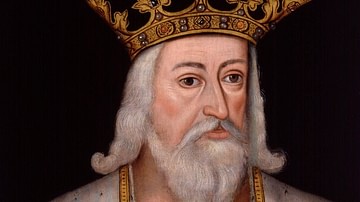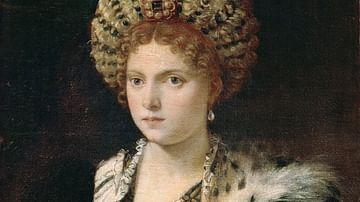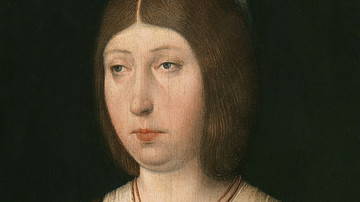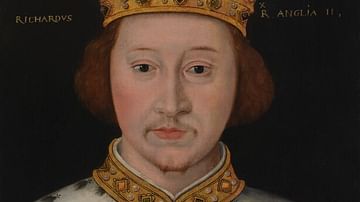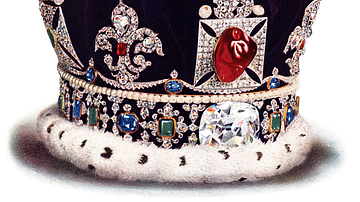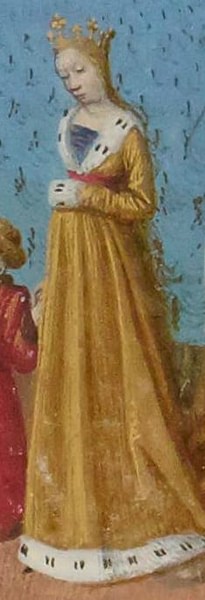
Isabella of France (c. 1292-1358) was the queen consort of Edward II of England (r. 1307-1327). After heading a coup to overthrow her husband, she ruled as regent for their young son, Edward III of England (r. 1327-1377) until he forced her into retirement in 1330. She died in England in 1358 and is known to history as the "she-wolf of France."
Early Life
Isabella of France was the daughter of Philip IV of France (r. 1285-1314), also known as Philip the Fair, and Joan I of Navarre. Her exact date of birth is unrecorded, but most historical sources agree that she was born in Paris c. 1292. She was the youngest of four siblings and the only daughter of King Philip to survive into adulthood. She was raised primarily around the Louvre Palace and the Palais de la Cité in Paris, where she conversed with and learned from some of the brightest intellects of her day. Remarkably for her time, she was permitted an elite education, and she would utilize her intelligence throughout her life to further her ambitions. However, despite being allowed the privilege of an education, she could not escape the reality of being married off for political alliances.
When she was only twelve, her father married her to the King of England, Edward II, who was eight years her senior. The match was intended to help heal fractured relationships between the two countries, and she was expected to help further French interests in the English court. However, from their marriage on 25 January 1308 at Boulogne-Sur-Mer, it was apparent that any fractures would remain unhealed. At their wedding, and later at their coronation on the 25 February 1308, her new husband Edward showered his favorite, Piers Gaveston, with all the jewels and regalia that should have rightfully gone to Isabella. While contemporary sources describe her as passive and stoic in the face of these slights, the French emissaries were so offended that they stormed out, taking any goodwill with them.
For the first few years of her marriage, Isabella tried to play peacekeeper in Edward's court, and she turned the other way when her husband showed more attention and favoritism to Piers Gaveston. Rather than fight for her husband's affections, she tried to work with Gaveston to ensure stability for the realm.
Isabella & the King's Favorites
While Isabella was attempting to work with Gaveston, the nobles of England were deeply offended by the man they considered an upstart. They felt he did not have enough aristocratic blood to influence the king and urged Edward to banish him from the country. Leading the opposition was the Earl of Lancaster, Edward's first cousin. With a large entourage of armed guards, Lancaster stormed Westminster Hall, where Edward and Isabella were in residence, and demanded that the king acquiesces to their demands: they had created an ordinance that would strip Edward of his ability to form an army, raise taxes, or make any political decision without the barons' approval. Essentially, it would make Edward Lancaster's puppet. To add salt to Edward's wounds, they also issued Article Twenty of the Ordinance, which stated that Piers Gaveston must leave the country, and if he returned, he would be killed for treason. Edward tried to negotiate with Lancaster and offered to agree to everything except Article Twenty, but for the barons, this was a personal vendetta against Gaveston, and they would not budge. To avoid civil war, Edward agreed.
Three months later, against all advice, Edward summoned Gaveston back to England and sent letters around England declaring that he was overturning the Ordinances. Upon hearing that Gaveston had returned, Lancaster marched his troops south and captured him. He was held at Warwick Castle, a Lancastrian stronghold. He was put on trial, but the jury consisted entirely of people who hated Gaveston. They had decided on the verdict before he had even arrived. Predictably, Lancaster had Piers Gaveston executed by beheading on the top of Blacklow Hill, just outside Warwick. Edward had renounced the ordinances, the legal means by which Lancaster tried Gaveston. This went against fundamental English Law, and Lancaster had gone too far in his thirst for power, and now Edward wanted revenge.
Despite the upheaval surrounding Gaveston, Isabella and Edward stayed close together. They welcomed their first child, the future Edward III, on 13 November 1312 at Windsor Castle, and they would have three more children: John, born in 1316; Eleanor, born in 1318; and Joan, in 1321. With the barons appeased and his family life more settled, Edward decided to reignite an old battle with Scotland.
The Battle of Bannockburn in Scotland was a disaster for the English. Edward suffered a humiliating defeat at the hands of the new Scottish king, Robert the Bruce. Thousands of English lives were lost, including many high-ranking nobles loyal to Edward. Edward's old enemy, Lancaster, refused to march north with his king. Edward saw this as another offense and sought an alliance with anyone who could help him take Lancaster down. He found his new 'cronies' in the Despensers: a father and son duo fiercely loyal to Edward and who owned enough land to bankrupt other nobles.
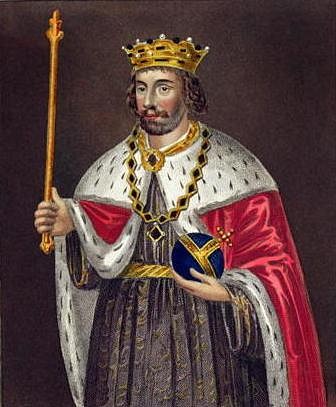
Over several years, Edward allowed the Despensers to enrich themselves with whatever property they could take, mainly along the Welsh border. Roger Mortimer owned one property they forcibly took, and he sought help from Edward to win his lands back. He had always been loyal to the king, but Edward would make no decision that might upset his new favorites. Mortimer was quick to raise a rebellion against the king, but he was captured in January 1322 and taken to the Tower of London. In March 1322, Edward finally had his revenge on Lancaster when he was discovered to have been sending letters to the Scottish king. He had him executed for treason without a trial, giving him the same treatment Lancaster had shown Gaveston.
Throughout the political chaos, Isabella stayed in her various royal residences raising her children and supporting her husband. In October 1321, she went to Leeds Castle and defended Edward against new ordinances brought by the barons to quell Despenser influence. But unbeknownst to her, the Despensers were plotting to remove her power from the king. They labeled her a foreign spy and had all her French ladies removed from her household, stripped her of her lands and money, and removed her children from her care. She begged Edward to intercede, but he would do nothing to help her. Edward had created his greatest enemy yet: Isabella.
Isabella in France
At the time of Edward II and Isabella, the English king technically still owed homage to the French king for his territories in France. The English king was expected to travel to France and periodically show loyalty to the French king, but it had been several years since Edward had crossed the channel. Isabella knew the relations between the two countries had deteriorated, so when Edward refused to leave the Despensers in England to visit France, she offered to go in his stead. After all, the new French king was her brother, and she had always been devoted to Edward – she could act as an interlocutor for the two kings. Still thinking Isabella was dedicated entirely to him, Edward gladly sent her as an envoy.
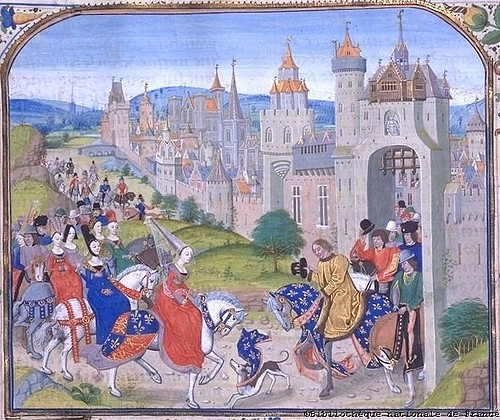
When she arrived at the French court, she was able to negotiate a peace treaty with the French king, and she asked Edward to join her in France to sign the papers. He refused to leave the Despensers alone in England out of fear for their lives. Isabella then suggested he send their eldest son, Edward, to come in his stead. King Edward agreed, and the young prince joined his mother in France.
With the heir to the throne with her, Isabella now held the balance of power. She shocked the French court by donning a widow's clothes and publicly declaring that she considered herself a widow and her husband dead to her until he removed the Despensers from the court. Around the same time, Roger Mortimer, the noble who had risen against Edward in 1322, had escaped from the Tower and ran to the French court. Within weeks, Roger and Isabella were lovers. In 1326, Isabella, Mortimer, and her son returned to England to overthrow Edward. They landed at Essex and marched towards London. Public hatred ran so deep in England that, within weeks, they had taken control of the country without blood being shed. Edward II ran north, and his son was crowned Edward III at Westminster Abbey on 29 January 1327.
Isabella the Regent
After her son was safely crowned king, Isabella and Mortimer became the powers behind the throne. She did not learn from her husband's mistakes because she quickly began enriching herself and Mortimer against the wishes of the nobility. While the young King Edward was underage, he had to rely on her until he reached his majority.
Bloodshed followed Isabella. Her husband was murdered at Berkeley Castle. Some accounts claim he was killed by having a hot poker shoved up his anus and burned from the inside. Others claim he was smothered in his sleep, and some argue he escaped to Italy and lived out his life as a recluse. No one can say with absolute certainty what happened to him, but by 1326 he was gone. The Despensers also suffered Isabella's wrath: Hugh Despenser Sr was beheaded on 26 October 1326, while Hugh Despenser the Younger suffered the complete traitor's death of hanging, drawing, and quartering. Contemporary accounts describe Isabella as stoically watching him be disemboweled as she enjoyed an apple. When the nobles rose against her, she donned armor and rode a war horse to meet them. They surrendered, and she had them all executed for treason. Her bloodlust would earn her the moniker "the she-wolf of France."
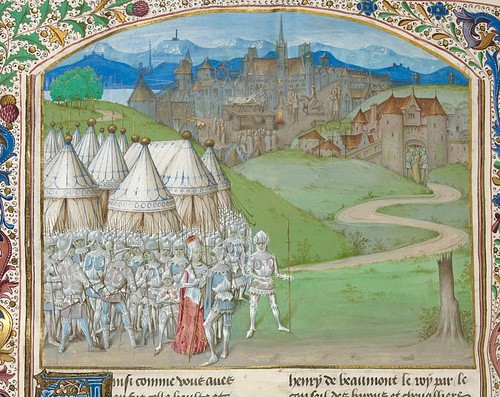
After four years, Edward III was chafing under the regency of his mother. He led a few trusted nobles through underground passages beneath Nottingham Castle and took his mother and her lover by surprise. They had so little warning of his approach that Mortimer did not even have time to dress. Isabella begged for Mortimer's life, but Edward would not listen. He had Mortimer hung on 29 November 1330 at Tyburn.
Later Life
Determined to end the bloodshed of his parents' reign, Edward III was merciful to his mother and everyone who supported her regency. She would live the rest of her life peacefully at her favorite royal homes. She could attend the court and spend time with her grandchildren, but she never held real power again. Isabella died on August 22, 1358, aged about 63, in Hertford Castle and was buried at the Christ Church Greyfriars in London. All following English and Scottish monarchs are descended from her, and through her bloodline in France, she was the catalyst for the Hundred Years' War, in which her son fought for the French throne in her name.

